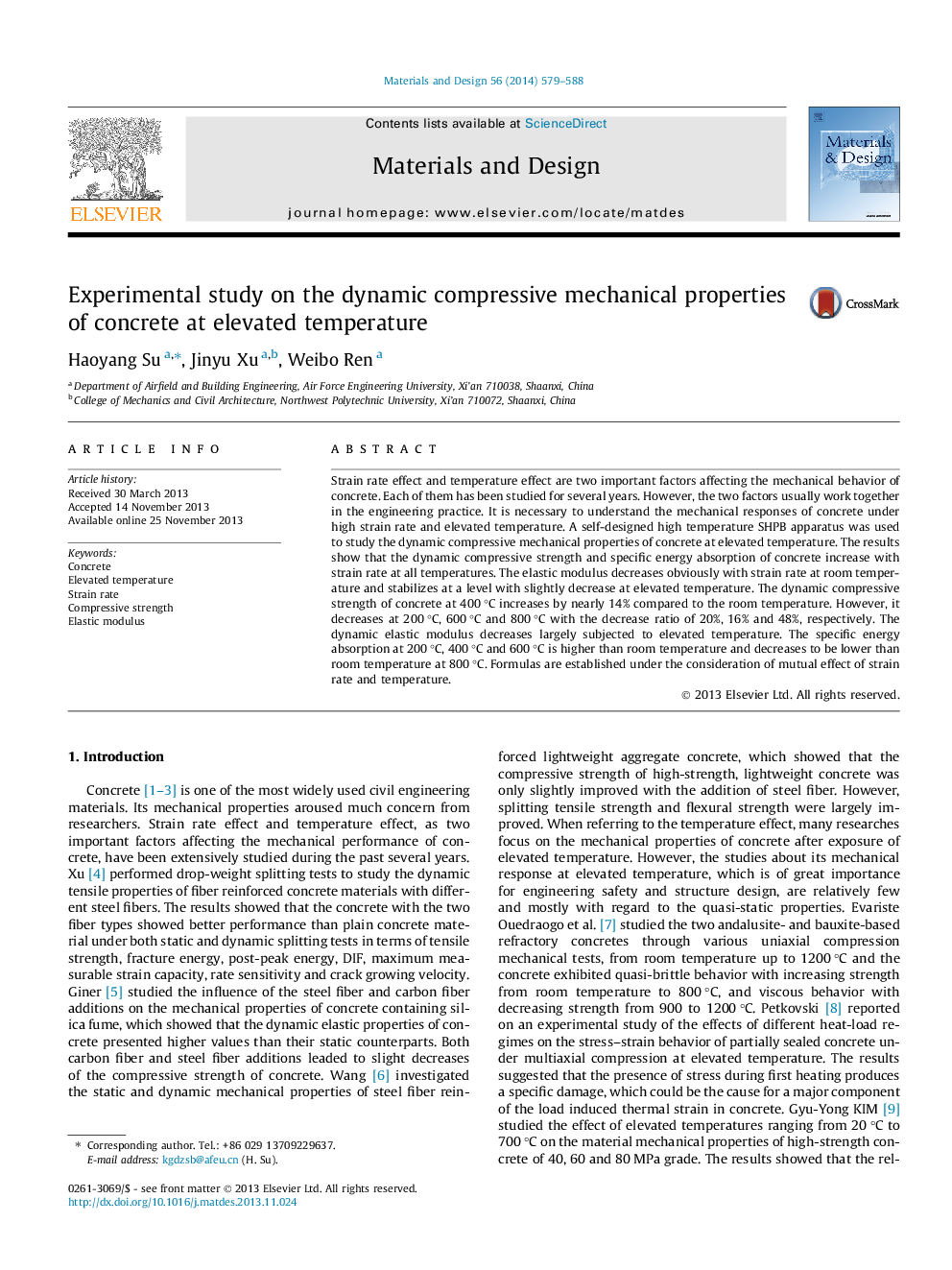| کد مقاله | کد نشریه | سال انتشار | مقاله انگلیسی | نسخه تمام متن |
|---|---|---|---|---|
| 829479 | 1470341 | 2014 | 10 صفحه PDF | دانلود رایگان |
• The dynamic compressive strength and SEA of concrete increase with strain rate.
• The elastic modulus stabilizes at a level at elevated temperature.
• The dynamic compressive strength of concrete at 400 °C increases by nearly 14%.
• The dynamic elastic modulus subjected to elevated temperature decreases largely.
• Formulas are established based on the mutual effect of strain rate and temperature.
Strain rate effect and temperature effect are two important factors affecting the mechanical behavior of concrete. Each of them has been studied for several years. However, the two factors usually work together in the engineering practice. It is necessary to understand the mechanical responses of concrete under high strain rate and elevated temperature. A self-designed high temperature SHPB apparatus was used to study the dynamic compressive mechanical properties of concrete at elevated temperature. The results show that the dynamic compressive strength and specific energy absorption of concrete increase with strain rate at all temperatures. The elastic modulus decreases obviously with strain rate at room temperature and stabilizes at a level with slightly decrease at elevated temperature. The dynamic compressive strength of concrete at 400 °C increases by nearly 14% compared to the room temperature. However, it decreases at 200 °C, 600 °C and 800 °C with the decrease ratio of 20%, 16% and 48%, respectively. The dynamic elastic modulus decreases largely subjected to elevated temperature. The specific energy absorption at 200 °C, 400 °C and 600 °C is higher than room temperature and decreases to be lower than room temperature at 800 °C. Formulas are established under the consideration of mutual effect of strain rate and temperature.
Journal: Materials & Design - Volume 56, April 2014, Pages 579–588
